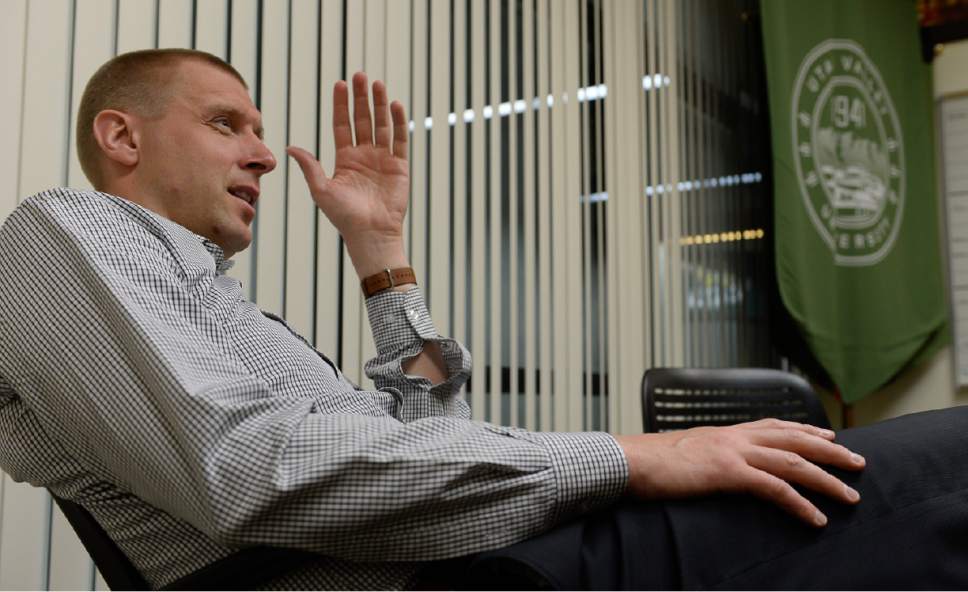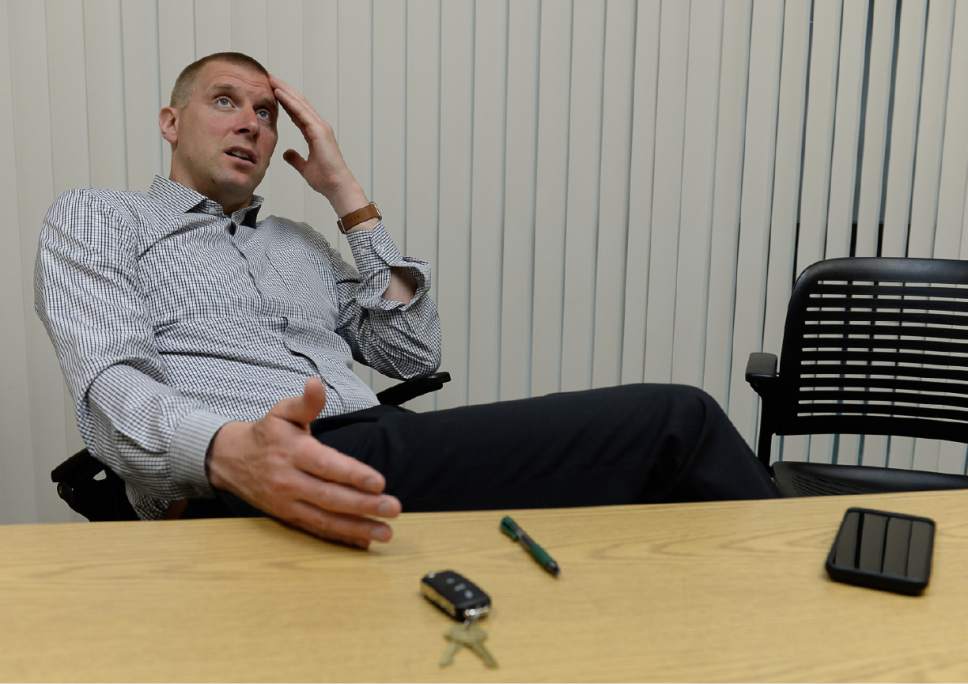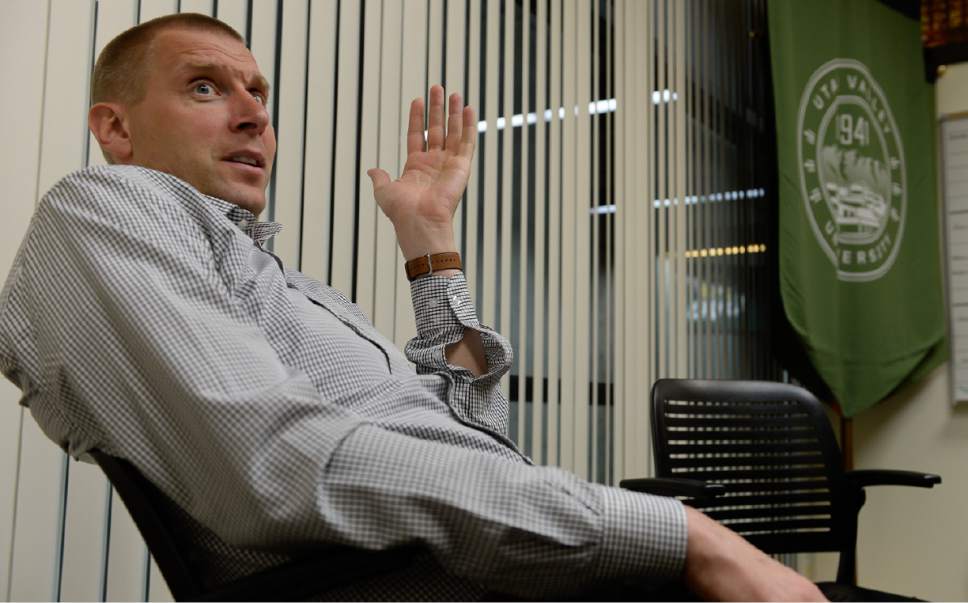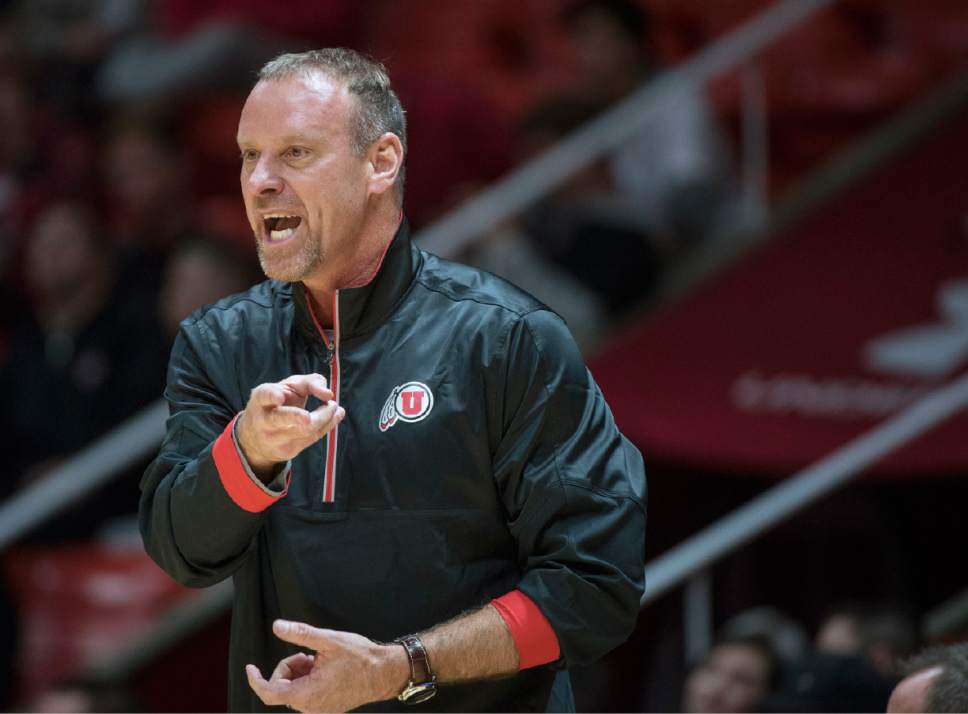This is an archived article that was published on sltrib.com in 2017, and information in the article may be outdated. It is provided only for personal research purposes and may not be reprinted.
Various scouting sites will tell you there have been more than 650 transfers in Division I college basketball this year.
For Utah Valley coach Mark Pope, some of those names invite possibility.
The Wolverines had six players on their roster last year who previously had played at another DI school. Among them were his best players — Brandon Randolph from Xavier; Kenneth Ogbe from Utah; a trio from BYU that included reliable big man Isaac Neilson. That group went 17-17 with a postseason run in the College Basketball Invitational. At least one of the signature wins came in Provo against the Cougars team that Pope and several of his players came from.
"I don't know if the number of transfers now is a good thing or a bad thing, but it is what we have to work with," said Pope, who is entering his third year at UVU. "We're trying to use it to our advantage here."
There are few issues in college basketball that stir passion as much as transfers, which have become a way of life in recent years, averaging between two and three per DI program. Fans tend to criticize players for leaving or grumble about coaches playing fast and loose with the rules when transfers depart and head for another school, but incoming transfers are almost always embraced.
That's how college coaches see the issue of transfers as well: It's a two-sided argument.
Utah's Larry Krystkowiak has watched nine players transfer out of his program in the last two seasons, including promising freshman Devon Daniels, who just committed to North Carolina State of the ACC. But while he believes that the wandering eyes of players are more of a problem than they used to be, two of his key returners next season — Sedrick Barefield and David Collette — both transferred in from other DI programs. Another key signee, Justin Bibbins, comes from Long Beach State under the controversial graduate transfer rule.
"We've received some guys, and we've had some guys who have left," Krystkowiak said. "It's just one of those popular deals right now."
The recruiting of transfers may seem murky from the outside, but several in-state basketball coaches who spoke to The Tribune said it's a relatively simple process.
Pope and his staff made transfers a priority for his first roster when he was hired at UVU in 2015. They scoured lists (the same ones many fans follow) to see who had received a release from his previous coach, then tried to contact high school or AAU coaches affiliated with those players.
For a first-year coach, building immediately through transfers can be more appealing than signing a huge group of high school players. It's a shorter commitment, it makes the team competitive earlier and it give the coach time to determine what kind of talent will be successful at his new school. Krystkowiak did it at Utah as well.
Pope also has found that recruiting visits for transfers are much more discerning than incoming freshmen. While high schoolers often are interested in prestige — how big the crowds are, how many games are on TV, etc. — players who already have left one DI school have a more personal set of criteria.
"Most transfers are not consumed with the glitz and glamour of the game," the UVU coach said. "It's more, 'I want a staff that's going to work with me. I want a style of play that fits me better. I want to be in a locker room where things make more sense to me.' You get down to the nitty gritty on what you care about in basketball."
Of course not all transfer contacts are initiated by coaches. Many Power 5 programs get calls from a player's representatives, usually a former coach or family member. Krystkowiak said the Utes get many calls like that in a given offseason. If the player has yet to receive a release, coaches put it through the compliance department until they're allowed to start recruiting the player. Many times, the receiving coaches talk to members of the player's former coaching staff to learn the circumstances of his departure.
This, however, raises concern that not everybody plays by the rules. Krystkowiak said he heard this offseason that schools were contacting Kyle Kuzma, who would have been eligible to transfer under the graduate transfer rule, to gauge his interest in leaving Utah — a blatant NCAA violation.
Utah State coach Tim Duryea, who has seen himself more on the losing end than the receiving end of the transfer trend, thinks that NCAA rules are far too easy to circumvent. With third parties, it can be easy for would-be transfers and potential destination schools to communicate.
"The rules in place for that are really clear as far as you issuing that kid his release and the schools needing permission to contact," Duryea said. "The majority of the transfers that are going on, they don't go through those protocols. They're initiated by people the NCAA and the universities have no control over."
There's no metric to measure how often coaches or players work around NCAA rules — or if they do at all. But there is a larger question of how transferring affects different schools. Duryea said mid-tier schools like Utah State are bleeding from both ends more than ever: Players who don't cut it might transfer to a smaller school, but players who are among the best in the league might wonder if they can thrive at a higher level. Graduate transfers, to some extent, have allowed many mid-major players to realize that goal at the expense of their former schools.
Collette left Utah State in 2015 days before the season began, leading to a clash with the Aggies that forced him sit out for a year.
While Duryea said he wouldn't comment on any specific player, he said developing talent only for that talent to leave has been frustrating for him as a coach.
"It's hard for any coach that has a player in his program that is doing well, you feel like the situation is set up perfectly and you've planned around them in your program," he said. "In some cases, you're not able to go out and immediately minimize the damage, and there's a regression that takes place. That's no fun for any coach, no matter how long you've been doing it."
Even for the coaches like Pope who seek out transfers, his goal is not to have a program full of them. He said he'd like more four-year players as his tenure goes on. While transfers always will be a part of the blueprint at UVU, four-year players will help establish continuity and culture.
Krystkowiak, in kind, wants to build around four-year players, but transfers might be an option for a team still with two open scholarships. He worries that the culture of youth basketball, which his own sons are a part of, is creating a template where players are incentivized to keep moving around. But he's not sure if there's a way to slow the trend down.
"I don't know where the legislation to change that lies because you don't want to take away the rights of young men, which is the way things in college sports are going," he said. "I don't know that it's something we can change."
Twitter: @kylegoon —
Making moves
P More than 650 Division I players have transferred this year, according to Verbalcommits.com.
• Division I programs average roughly two outgoing transfers per year.
• Every Utah Division I program had at least one player who had been at another DI school the previous year.











